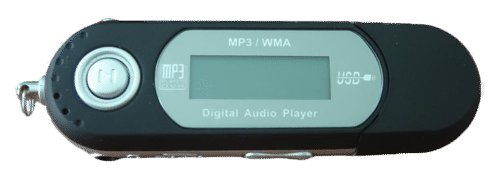7.6 名词库系统
章节大纲
-
How is an mp3 player designed?
::MP3播放器是如何设计的?In describing many technological items, it's not enough to simply say what brand or model we have. We talk about details such as how much horsepower is “under the hood” for a car or how fast the chip is for our computer. Even a simple device like an mp3 player has more than one size. We can get an 8 MB player, or a 16 MB player. Designation of the item often is incomplete without other information as to its capabilities.
::在描述许多技术项目时,仅仅说我们拥有的品牌或型号是不够的。 我们谈论的细节包括汽车的“引擎盖下”有多少马力,或者芯片对我们的计算机有多快。 即使是像 mp3 播放器这样的简单设备,其尺寸也不止一个。 我们可以找到一个 8 MB 播放器, 或一个 16 MB 播放器。 没有关于其能力的其他信息, 指定该项目通常不完全 。have more than one possibility for formation. In order to name these compounds correctly, we need to be able to indicate which ion is involved in any given .
::为了正确命名这些化合物,我们需要能够指出哪些离子涉及任何给定的离子。Naming Compounds Using the Stock System
::使用库存系统命名化合物Naming compounds that involve transition metal necessitates the use of the Stock system . Consider the binary ionic compound FeCl 3 . To simply name this compound iron chloride would be incomplete because iron is capable of forming two ions with different charges. The name of any iron-containing compound must reflect which iron ion is in the compound. In this case, the subscript in the formula indicates that there are three chloride ions, each with a 1− charge. Therefore, the charge of the single iron ion must be 3+. The correct name of FeCl 3 is iron(III) chloride, with the cation charge written as the Roman numeral. Here are several other examples.
::将涉及过渡金属的化合物命名为涉及过渡性金属的化合物需要使用库存系统。 考虑二进制离子化合物 Fecl3 。 简单地列出这种化合物的氯化铁名称将是不完整的, 因为铁能够形成两离子, 电荷不同。 任何含铁化合物的名称都必须反映化合物中的哪些铁离子。 在此情况下, 公式的下标显示有三种氯化离子, 每个有1- 电荷。 因此, 单铁离子的电荷必须是 3+ 。 Fecl3 的正确名称是 氯化铁( III) , 其电源充电量是罗马数字。 以下是其他几个例子 。Formula Name Cu 2 O copper(I) oxide CuO copper(II) oxide SnO 2 tin(IV) oxide The first two examples are both oxides of copper (shown in Figure ). The ratio of copper ions to oxide ions determines the name. Since the oxide ion is O 2- , the charges of the copper ion must be 1+ in the first formula and 2+ in the second formula. In the third formula, there is one tin ion for every two oxide ions. This means that the tin must carry a 4+ charge, making the name tin(IV) oxide.
::前两个例子是铜的氧化物(见图)。铜离子与氧化离子之比决定了名称。由于氧化离子为O2,铜离子的装载量必须在第一个公式中为1+,第二个公式中为2+。在第三个公式中,每两个氧化离子中为1锡离子。这意味着锡必须携带4+电荷,使锡(IV)氧化物的名称成为锡(IV)氧化物的名称。Copper(I) oxide, a red solid, and copper(II) oxide, a black solid, are different compounds because of the charge of the copper ion.
::氧化铜(I)氧化铜、红固体和氧化铜(II)氧化铜、黑固体,由于铜离子的装药,是不同的化合物。Summary
::摘要-
The Stock system allows the specification of transition metal ionic charge when naming ionic compounds.
::库存系统允许在命名离子化合物时对过渡性金属离子电荷进行规格说明。 -
Roman numerals are used to indicate the amount of positive charge on the cation.
::罗马数字用于表示电弧的正电荷量。
Review
::回顾-
What is the Stock system?
::什么是股票系统? -
For which group of metal ions would we use the Stock system?
::对于哪组金属离子,我们将使用股票系统? -
What does the Roman numeral stand for?
::罗马数字代表什么? -
Assign a Roman numeral to each of the following cations:
-
Sn
4+
::Sn4+ Sn4+ -
Fe
3+
::Fe3+Fe3+ -
Co
2+
::CO2+CO2+CO2+CO2+CO2+CO2+CO2+CO2+CO2+CO2+CO2+CO2+CO2+CO2+CO2+CO2+CO2+CO2+CO2+CO2+CO2+CO2+CO2+CO2+CO2+CO2+CO2+ -
Pb
4+
::Pb4+ Pb4+
::为以下每一种配种指定罗马数字:Sn4+FE3+CO2+Pb4+ -
Sn
4+
-
The Stock system allows the specification of transition metal ionic charge when naming ionic compounds.

